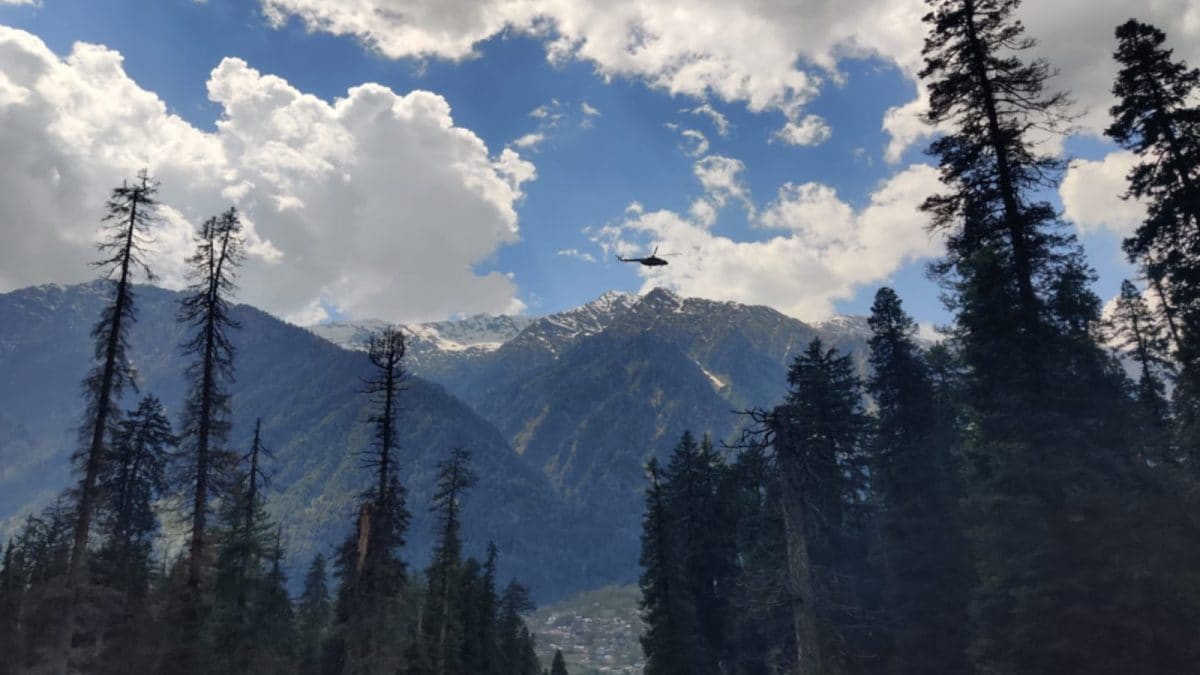 |
|
The News18 report paints a grim picture of the aftermath of the terror attack in Baisaran Meadow near Pahalgam, a location previously perceived as a tranquil “mini Switzerland.” The investigation reveals a stark absence of security measures despite the area's increasing popularity among tourists. The initial 45-minute trek to the meadow lacks any visible security presence, a critical oversight highlighted by the survivor accounts and local perspectives. The helicopter sorties overhead serve as a constant, unsettling reminder of the violence that recently transpired, shattering the idyllic facade of the landscape. This juxtaposition of natural beauty and recent brutality underscores the vulnerability of the area and the urgent need for enhanced security protocols. The transformation of the mule track from soft and slippery to hard rock, devoid of pony traffic, further emphasizes the disruption caused by the attack and the fear that now permeates the region. The presence of CRPF and Jammu and Kashmir police at the base, conducting joint combing operations, signifies the ongoing investigation and the government's attempt to restore order and confidence. However, the effectiveness of this response is questioned by the reported lack of immediate assistance to the victims during the attack. The National Investigation Agency's involvement in gathering evidence from the ground underscores the seriousness of the incident and the intent to thoroughly investigate the conspiracy behind it. The scattered belongings of tourists, the remnants of snack carts, and the fluttering tarpaulin sheets serve as poignant reminders of the lives disrupted and the sense of security shattered by the attack. Pallavi Manjunath's harrowing account of waiting for an hour without help, coupled with the lack of mobile signal, highlights the dire circumstances faced by the victims and the urgent need for improved communication infrastructure and emergency response capabilities in the area. The locals' fear and initial hesitation to assist further underscores the climate of insecurity and the psychological impact of the attack on the community.
Rauf Wani, a pony owner, provides valuable insight into the changing dynamics of tourism in Baisaran Meadow. He notes a significant increase in footfall in recent years, particularly after 2019. The surge in tourist numbers, from approximately 50,000 annually to as many as 10,000 per day, indicates a heightened demand for recreational activities in the area. This rapid growth, however, appears to have outpaced the corresponding security measures, creating a vulnerable environment exploited by the attackers. Wani's call for a police post and enhanced security along the route underscores the urgent need for a proactive and comprehensive security strategy to protect tourists and maintain the region's appeal. The locals also emphasize the recent addition of amenities such as zip lines, zorbing, and a play area for kids, further contributing to the area's popularity among families. These attractions, while intended to enhance the tourist experience, may have inadvertently created a 'soft target,' making the meadow more susceptible to attacks. The locals strongly believe that the attack was well-planned and that the meadow was thoroughly studied to identify weaknesses and exploit vulnerabilities. The 'blood clots at the gate of Baisaran Meadow' serve as a stark reminder of the premeditated nature of the attack and the deliberate intent to inflict maximum casualties. Therefore, an analysis of the target selection and security vulnerabilities is crucial to developing effective counter-terrorism measures and preventing future attacks. The investigation should consider the timing of the attack, the choice of location, and the attackers' knowledge of the area's security protocols.
The article provides a compelling argument for a reassessment of security measures in tourist destinations in Jammu and Kashmir. The lack of security personnel along the 45-minute trek to Baisaran Meadow is a significant vulnerability that needs to be addressed immediately. Increased patrols, the establishment of permanent security posts, and the implementation of surveillance technologies are essential steps to deter future attacks and provide a sense of security for tourists. The need for improved communication infrastructure is also paramount. The lack of mobile signal during the attack hampered rescue efforts and exacerbated the victims' distress. Ensuring reliable communication networks in remote areas is crucial for facilitating timely emergency response and providing reassurance to tourists. Furthermore, the article highlights the importance of community involvement in security efforts. Engaging local residents in intelligence gathering and security awareness programs can enhance the overall security posture and foster a collaborative approach to counter-terrorism. The Bakarwal boy's curious observation of the arriving media team underscores the potential for local residents to provide valuable insights and assistance to security forces. A thorough investigation of the attack is essential to identify the perpetrators, uncover the motives, and prevent similar incidents from occurring in the future. The National Investigation Agency's involvement in the investigation underscores the seriousness of the matter and the government's commitment to bringing the perpetrators to justice. The investigation should also focus on identifying any potential intelligence failures or security lapses that may have contributed to the attack.
In conclusion, the News18 report presents a sobering account of the aftermath of the Pahalgam attack, highlighting critical security vulnerabilities and the urgent need for comprehensive security reforms in tourist destinations. The lack of security presence, the inadequate communication infrastructure, and the rapid growth of tourism without corresponding security measures all contributed to the vulnerability of Baisaran Meadow. The attack serves as a wake-up call for authorities to prioritize the safety and security of tourists and local residents alike. Implementing enhanced security protocols, improving communication networks, fostering community involvement, and conducting thorough investigations are essential steps to prevent future attacks and restore confidence in the region. The 'bloodstained meadow' should serve as a constant reminder of the human cost of security lapses and the imperative for proactive and vigilant security measures.
Source: The Bloodstained Meadow: Here's What News18 Found At The Site Of The Pahalgam Attack
